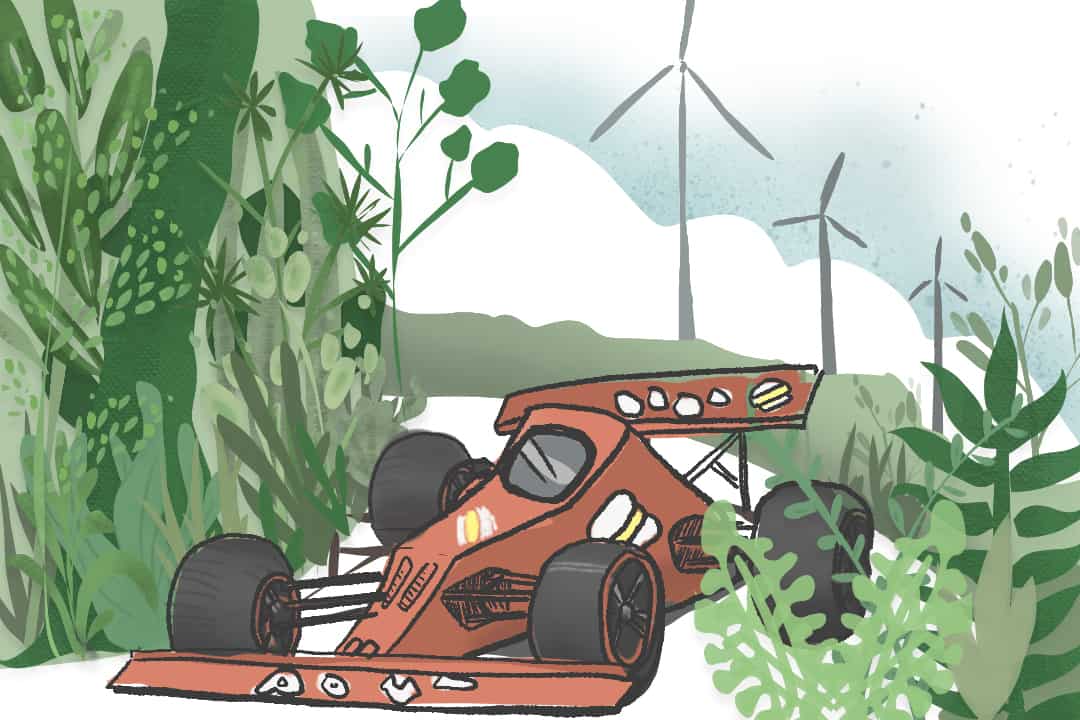From travelling the world to competing with cutting-edge technology, Formula 1 (F1) has been notorious in motorsports for its luxury and glitz. However, behind the roaring V6 engines and the glitz of the pit lane lie significant environmental challenges.
F1 produces a large carbon footprint and has been heavily criticized by environmentalists and its drivers over the years for some of its practices. Some drivers have been taking individual climate action — for example, four-time world champion Sebastian Vettel drove to most of his European races last season, opting out of flying, like he and most drivers normally do. Although F1 as a sport has committed to a greener future, it’s important to be conscious of whether its promises are attainable or if this commitment is an attempt to greenwash the sport.
F1’s biggest environmental challenge is its carbon footprint; with 10 teams, 20 cars, and 23 races held in different countries, F1 emits approximately over 256,000 tons of carbon dioxide every season. The sport’s environmental impact is undeniable, as F1 cars’ high-performance engines fuelled by gasoline burn copious amounts of fossil fuels each race. F1 should not be exempt as the entire world strives to decrease carbon emissions; its emissions are adding to the greenhouse effect, thus fuelling the climate crisis.
However, the primary contributor to the sport’s carbon emissions is not the cars themselves. While high-performance engines do play a part in emissions, it is worth noting that only approximately 0.7 per cent of the sport’s carbon emissions stem from the usage of F1 cars. The rest comes from spectators travelling to and from the venues and the energy needed to power F1 race tracks, especially for night races. Additionally, the extensive international travel and logistics associated with car production and repair, as well as track maintenance, have increased significantly over the years.
Nevertheless, the fact that F1’s engines only account for this percentage highlights the carbon emissions generated by F1’s global operations, signifying the urgent need for the sport to address its environmental impact.
It is crucial to acknowledge the efforts the sport has made to increase environmental consciousness. Over the years, F1 has introduced many regulations to reduce its carbon footprint, such as by standardizing of cars to V6 engines — a much smaller engine that is intended to promote fuel efficiency and support environmentally-friendly racing.
Similarly, another debate regarding F1 consumption is tire usage and waste. On a standard Grand Prix race weekend, teams are given 11 sets of tires for the weekend. Some drivers deem the number of tires needed for each race unnecessary, while others disagree, asserting that different tire sets are essential for each country’s race track and what it demands. A huge concern is that drivers don’t use some sets of tires, such as wet or dry tires, resulting in them being discarded.
As a result, F1 has committed to recycling tires as fuel for cement manufacturing. The recycling and repurposing of discarded F1 tires is a notable step toward waste reduction. However, why should the tires be transported to races if they won’t be used in the first place?
Similarly, the International Automobile Federation (FIA) intends to be net zero by 2030; meaning that by 2030, it intends to reduce its carbon emissions by 50 per cent. Its pursuit of net-zero waste is a desirable objective, but it must achieve that goal with a sincere dedication to sustainability, to avoid the greenwashing trap.
F1 can move closer to this goal by employing significant changes like recycling tires, procuring racetrack materials ethically, and reducing carbon emissions from travel. To create successful outcomes, the FIA needs to be more transparent.
F1 must address its environmental impact even as it continues to engage viewers worldwide. The sport’s recent commitments to sustainability are encouraging, but they are just the start. It’s time for F1 to improve its efforts, lessen its carbon footprint, and adopt better policies that help the environment.
As fans, we have a responsibility to demand ethical behaviour from F1 drivers and support a greener, more sustainable future for the sport. Reducing F1’s harmful impact will benefit the environment and future generations.


